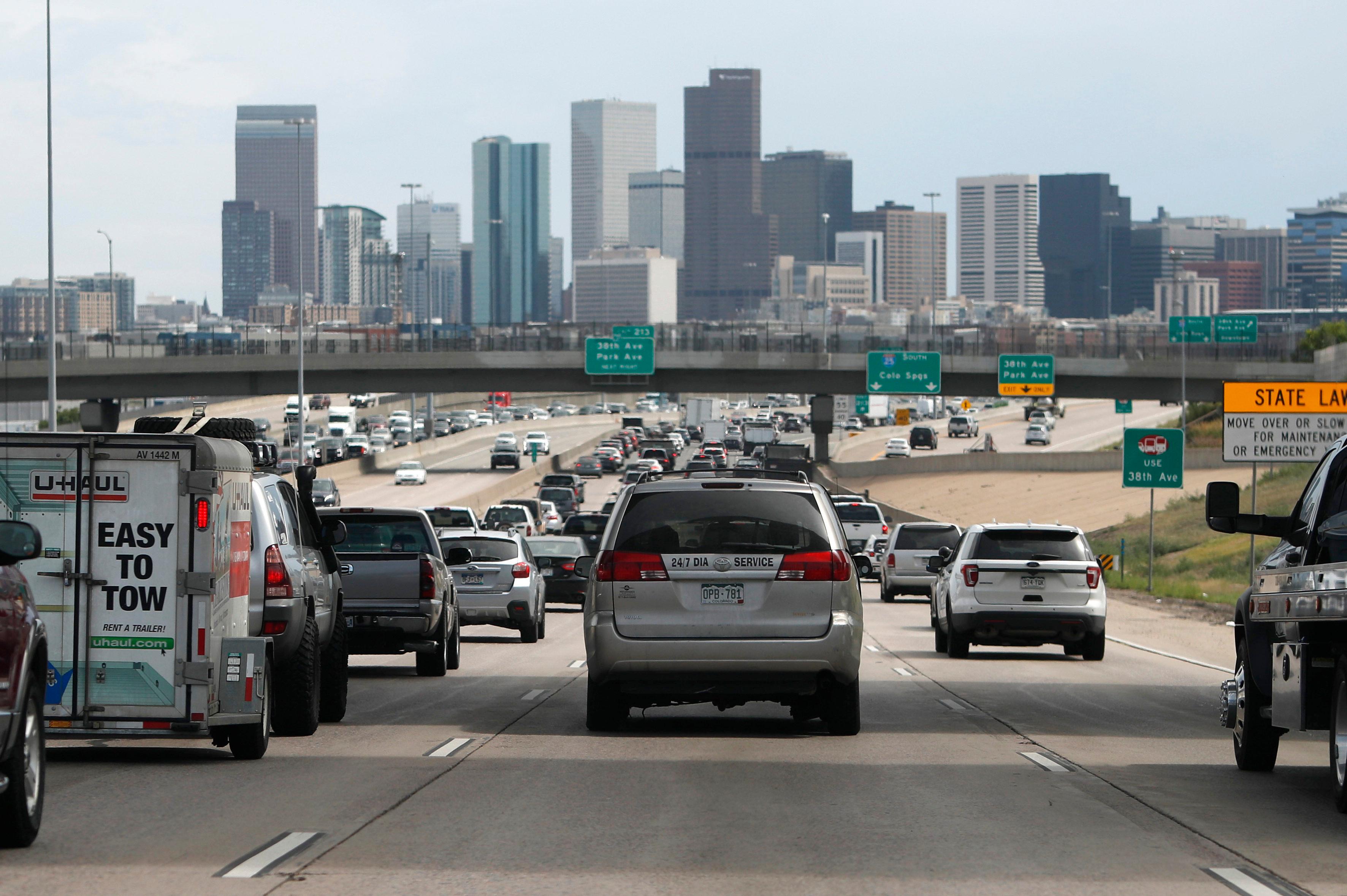
While Colorado’s electric utilities are on track to significantly reduce their greenhouse gas emissions this decade, it is less clear whether the same will happen in the transportation sector and fossil fuel industry, the state’s top climate official said Friday.
The declarations from Colorado Energy Office Executive Director Will Toor came during the most comprehensive overview yet of the state’s progress to cut carbon emissions responsible for human-caused climate change. Gov. Jared Polis laid out the state’s strategies in a climate roadmap he released at the beginning of the year.
Toor’s presentation, given to the state’s Air Quality Control Commission, listed commitments by utilities such as Xcel Energy and the Tri-State Generation and Transmission Association to cut their carbon emissions by 80 percent of 2005 levels by the end of the decade. The utilities are basing their reductions on gradually ending their use of coal and increasing their use of renewables like wind and solar.
“We have a very high degree of confidence that the state will meet the 2030 target,” Toor said. “It is in fact highly likely that we will exceed the minimum level of emissions reductions.”
But cutting emissions from the transportation sector — the largest source of greenhouse gases in the state — is the “most complicated” piece, Toor said. The state is projected to slash its emissions from the sector by about 40 percent, nearly 13 million tons of carbon dioxide, by the end of the decade.
Two-thirds of that goal will be reached by existing investments in electrification and rules for car manufacturers to sell zero-emission vehicles, Toor said. The remaining one-third could come from a combination of policies that have not been enacted, such as pollution standards for transportation projects and land-use changes to shorten commutes.
Many of the state’s goals are dependent on significant investments from the federal government, including billions for electric vehicle charging stations, energy efficiency programs for homes and buildings, and technology to capture carbon emissions from the air and store them underground.
Jeremy Nichols, director of the climate and energy program for environmental group WildEarth Guardians, said he was disappointed by what he saw as an overreliance on the federal government and policies that do not yet exist.
“Obviously some of this stuff takes time, but there’s a lot of action they could be taking right now,” Nichols said. “We’re just looking for signs of real concrete action.”
Nichols said the Air Quality Control Commission is being held back by the Air Pollution Control Division, which brings the commission proposals for consideration.
One of those proposals, discussed Friday, would tie oil and gas companies’ carbon reductions to the amount of oil they produce. Division officials described the “intensity target” idea as innovative; activists saw it as experimental and uncertain to work.
The state aims to reduce carbon emissions from the oil and gas sector by 60 percent of 2005 levels by the end of the decade, or about 12 million tons of carbon dioxide. Much of that, Toor said, depends on what rules are adopted by the Air Quality Control Commission.
About two dozen people Friday urged the commission to move faster on policies to cut emissions. Many cited the record number of ozone action day alerts in the Front Range this summer, much of the haze caused by traffic and oil and gas extraction.
Commissioner Tony Gerber said the update presented by Toor is more useful than knowing the day-to-day levels of ozone in the atmosphere.
“I don't think we’re ready to declare success in any way, shape or form, but the flipside is, a bad ozone season does not mean that we’re not trying to make progress,” he said.
The commission will consider the intensity target proposal in December.









